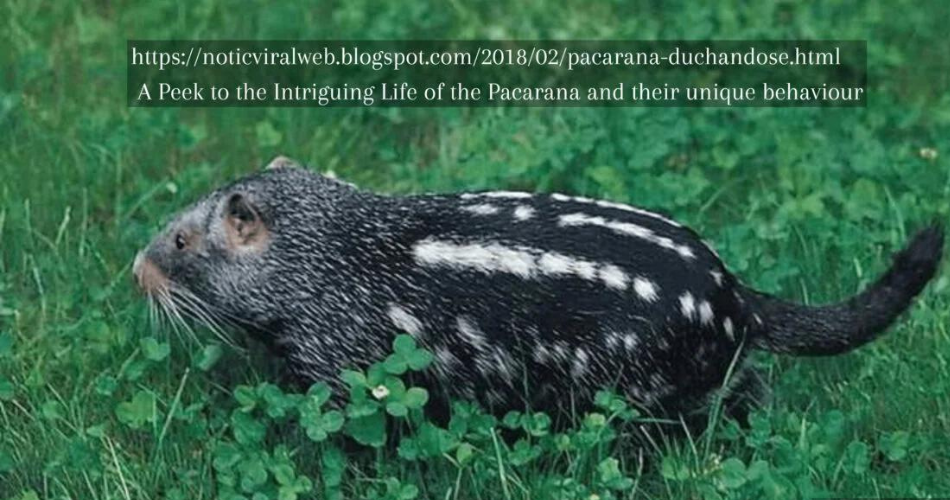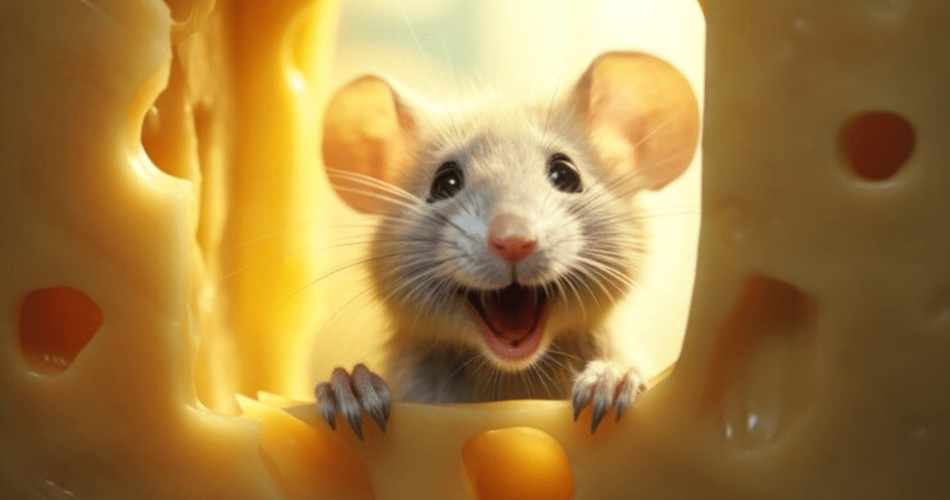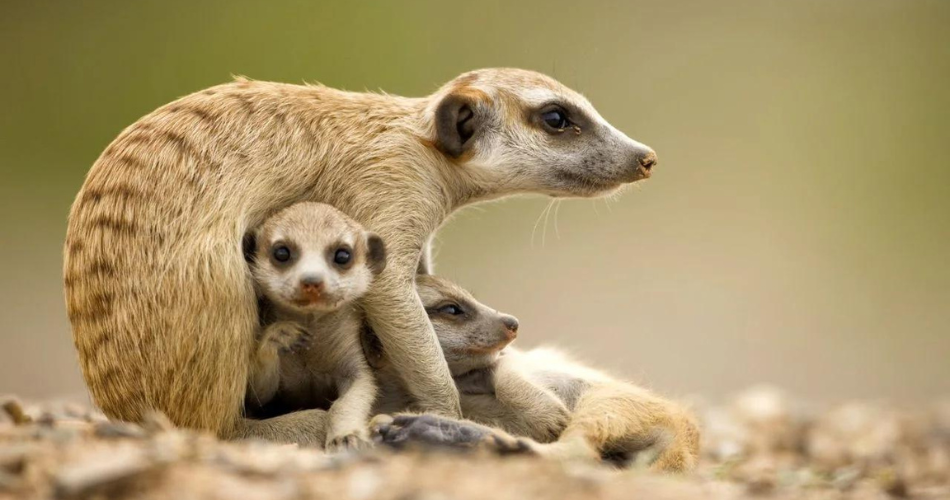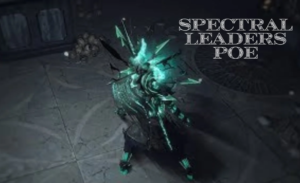
Exploring the Pacarana: A Deep Dive into the Unique Rodent Featured on Notic Viral Web
Introduction to the Pacarana
The pacarana (Dinomys branickii) is a captivating and rare rodent that calls the tropical Andes of South America its home. While it might look like a large rat at first glance, the pacarana is actually more closely related to guinea pigs than to rats. As the third largest rodent in the world, following only the capybara and the beaver, the pacarana holds a special place in the animal kingdom. This article delves into the intriguing aspects of the pacarana, exploring its classification, habitat, unique behaviors, and conservation status.
Where It Fits in the Animal Kingdom
The pacarana is a nocturnal mammal, meaning it is most active during the night. Its diet primarily consists of fruits, leaves, and plant roots, which are readily available in its natural habitat. Unlike many other rodents that are often characterized by their quick and skittish movements, the pacarana is known for its gentle nature and deliberate pace. This slower, more methodical approach to life stands in stark contrast to the stereotypical image of rodents, providing a unique perspective on the diversity within this group of animals.
Classification and Distinction
Classified under the order Rodentia and the family Dinomyidae, the pacarana belongs to a unique genus of rodents. Its distinct physical characteristics set it apart from its rodent relatives. Pacaranas possess a robust, hefty body, short ears, and a bushy tail, which contribute to their distinctive appearance. These features make them a fascinating subject for both animal enthusiasts and biologists, offering insights into the evolutionary adaptations of rodents.
Habitat and Distribution
Natural Habitat of the Pacarana
The pacarana is native to the lush tropical rainforests of South America. It primarily inhabits countries such as Venezuela, Colombia, Ecuador, and Peru. The dense forest cover and the abundant food sources available in these regions are essential for the pacarana’s survival. The complex ecosystem of the tropical rainforest provides the pacarana with a suitable environment to thrive, offering both nourishment and protection from potential predators.
Importance of Conservation
The pacarana faces significant threats due to habitat destruction and human encroachment. Deforestation, driven by agricultural expansion and urban development, has led to the degradation of the pacarana’s natural habitat. As a result, the species is increasingly at risk, with its population dwindling in certain areas. Conservation efforts are vital to ensuring the survival of the pacarana and maintaining the health of its ecosystem. Protecting their natural habitat is not only crucial for the pacarana but also for the myriad other species that share this environment.
Key Conservation Areas
In Venezuela, where the pacarana is already classified as endangered, there is an urgent need for targeted conservation measures. Preserving critical habitats such as the Amazon rainforest is essential for safeguarding the pacarana and other wildlife. Conservation initiatives focused on habitat restoration, anti-poaching measures, and public awareness campaigns are crucial for reversing the decline of this unique rodent.
Unique Behaviors
Bathing Habits
One of the most intriguing behaviors exhibited by the pacarana is its approach to bathing. Unlike many other rodents, pacaranas have been observed engaging in what appears to be a form of bathing. This behavior was notably highlighted in a viral video, where a pacarana was seen rubbing its body with its front paws, seemingly cleaning itself. However, closer examination revealed that this behavior might not be a voluntary bath. Instead, it appears that the pacarana was attempting to remove an irritant substance from its fur. This highlights the importance of accurate observation and interpretation of animal behavior to avoid misconceptions.
Survival Techniques
Pacaranas have developed several unique survival strategies to thrive in their natural habitat. They are adept at digging burrows at the base of trees or in rocky outcrops, creating safe resting places away from potential predators. Their slow movements and nocturnal habits help them avoid detection by predators, enhancing their chances of survival. These adaptations reflect the pacarana’s evolutionary response to its environment and contribute to its ability to navigate the challenges of its habitat.
Social and Feeding Behavior
While pacaranas are generally solitary creatures, they are occasionally observed in pairs, particularly during the breeding season. Their diet, which includes fruits, leaves, and roots, plays a crucial role in the ecosystem by aiding in seed dispersal. Despite their solitary nature, pacaranas contribute to the ecological balance by facilitating the growth of plant species through their feeding habits. This highlights the interconnectedness of species within an ecosystem and underscores the importance of each species in maintaining environmental health.
Significance of Understanding Wildlife Behavior
Importance in Biodiversity
Each species plays a unique role in its ecosystem, and their behaviors contribute to the overall health and stability of the environment. By observing and analyzing these behaviors, scientists can gain valuable insights into the complex interactions between species and their habitats.
Implications for Environmental Health
Understanding and preserving natural behaviors are crucial for protecting ecosystems. The loss of any species can trigger a cascade of effects, disrupting the balance of nature and leading to unforeseen consequences. By studying species like the pacarana and their behaviors, researchers can identify potential threats to ecosystems and develop strategies to mitigate these risks. This knowledge is essential for maintaining the health and resilience of natural environments.
Role in Conservation Strategies
Behavioral studies provide valuable information that can inform conservation strategies. For example, understanding the pacarana’s reliance on specific habitats can help prioritize areas for protection and restoration. By incorporating behavioral insights into conservation efforts, organizations can develop more effective strategies for safeguarding endangered species and their habitats.
Conservation Efforts
Current Initiatives
Several organizations and conservation groups are actively working to protect the pacarana and its habitat. These initiatives include habitat restoration projects, anti-poaching measures, and public awareness campaigns aimed at highlighting the importance of preserving this unique rodent. Collaborative efforts between governments, NGOs, and local communities are crucial for the success of these conservation programs.
How You Can Help
Individuals can also make a significant impact by supporting conservation efforts and raising awareness about endangered species. Simple actions, such as reducing your carbon footprint, supporting conservation organizations, and spreading information about species like the pacarana, can contribute to broader efforts to protect wildlife. Engaging in sustainable practices and advocating for environmental protection can help ensure a future where species like the pacarana continue to thrive.
Future Prospects
Sustainable practices and responsible development are crucial for ensuring a future where wildlife can thrive and ecosystems remain healthy. By embracing and supporting conservation initiatives, such as protecting natural habitats, reducing pollution, and promoting sustainable land use, we can help safeguard the rich biodiversity of our planet. Making informed choices in our daily lives—whether through sustainable consumption, reducing our carbon footprint, or supporting eco-friendly businesses—plays a significant role in this effort. These actions not only contribute to the preservation of wildlife but also help maintain the delicate balance of our ecosystems. By working collectively towards these goals, we can ensure that future generations inherit a world brimming with diverse life forms, vibrant ecosystems, and a healthier environment, preserving the beauty and richness of our planet for years to come.
Conclusion
The pacarana is a remarkable yet often overlooked rodent that offers a unique glimpse into the diversity of the animal kingdom. Its distinctive behaviors, such as its unusual bathing habits, highlight the fascinating adaptations and evolutionary paths of different species. Understanding and preserving these behaviors is crucial for maintaining the health of our ecosystems and ensuring the survival of endangered species.
By learning more about animals like the pacarana and supporting conservation efforts, we can play a role in protecting the natural world for future generations. Whether through supporting conservation organizations, reducing our environmental impact, or simply spreading awareness, each of us can contribute to the preservation of our planet’s incredible biodiversity. If you’re interested in further involvement, consider reaching out to local conservation groups or participating in wildlife preservation programs to make a difference.
Stay in the know with the latest news and updates on MumbaiBreaking

